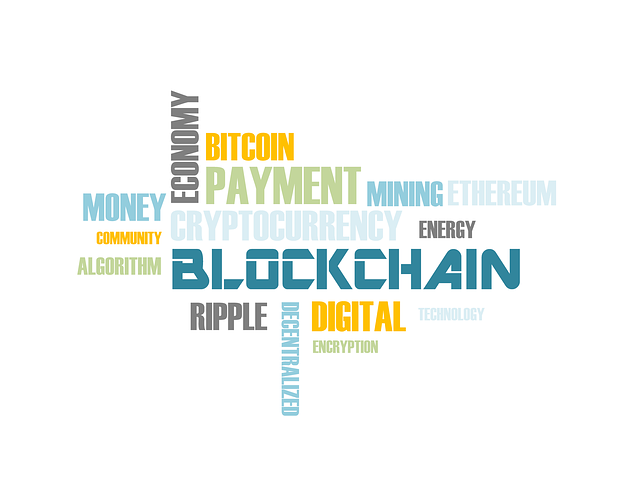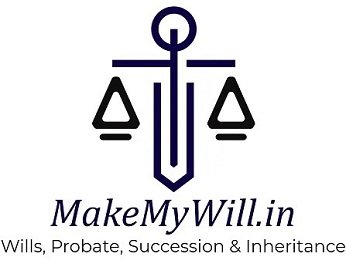Classifying ICOs as Securities
INTRODUCTION
In Brazil, no specific legislation governs the cryptocurrencies, and consequently, ICOs and STOs remain unregulated. Because no particular legislation deals with cryptocurrencies and blockchain technology, many existing legislation and laws would bring cryptocurrencies and blockchain technology under their ambit. This opinion paper would specifically focus on the application of Howey’s test [1] to determine whether a cryptocurrency will fall under the ambit of security law. This paper would also focus on whether this test can be deemed to be enough to determine whether a cryptocurrency or ICO will come under the ambit of security under the federal law 6.385/1976 (Lei dos Valores Mobiliários), which regulates securities and establishes the Brazilian Security Regulator, the Comissão de Valores Mobiliários — CVM.
ICOs are a variant of cryptocurrencies. The crypto space is evolving with new state of the art technology for fundraising and investment. The keyword is a token. A token is a utility, an asset, or a unit of value issued by a company. [2]ICO is a process through which these tokens are created on a blockchain through a decentralized software protocol. These ICOs have become a source for early stages of start-ups for crowdfunding or other fundraising activities through for these start-ups. These digital tokens can be exchanged with cryptocurrencies such as bitcoins or ethers or directly with fiat currency or a combination of both.
These tokens might have different functionalities; in some cases, they might function as digital currency; in others, they might represent real estate or gold. But some are unique and popularly known as AppCoins, which are the Blockchain tokens, which can be used in new protocols and networks to create distributed applications. But the riskiest and speculative digital tokens are the ones that represent the parts of a speculative venture(s).
The issue of ICOs has emerged as an alternative to traditional forms of start-up financing. The issuance of ICO is generally preceded by the company issuing a whitepaper on its technology and explaining the objective for raising funds. These tokens can be transferred across the network and can be traded on cryptocurrency exchanges. They can serve multiple functions: from granting investors access to a service to entitling investors to a share of the start-up companies.
Note: The tokens shall never be marketed as an investment as doing such would bring the tokens under the purview and ambit of CVM, which would end up defeating the purpose of issuing an ICO (if these need to be registered with CVM).
The CVM has released a statement in the past regarding the Initial Coin Offerings, i.e., ICOs, highlighting amongst other things, the risks associated with such tokens, and them being construed as securities in certain cases.[3]
The innovation associated with ICOs comes from a sequence of factors. First, by using exclusively digital media, this form of funding facilitates the capture of funds from investors from any location by transferring virtual currencies or fiat currencies, with greater ease and agility when compared to traditional channels.
Second, the “digitization” of the operational process chain usually relies on cryptography, logical programming, decentralized computer network protocols, and distributed ledger technology (DLT), which in theory allows for greater speed and records accuracy.
There is a clear risk with the issuance of ICOs as many of the companies are looking to raise money without having any tangible products. Regulators world over are mulling on how to regulate ICOs and digital tokens. Are they securities or not? How to tax them?
According to the paper published by the Government of India[4], the regulation of digital coins or tokens depend on the characteristics and the purpose for which they are being issued. Depending on the objective of the issue, tokens can be grouped into two broad categories:
- Utility tokens: Utility tokens offer investors access to a company’s products or services. They are not to be treated as an investment in a company. An example of the Utility Token is File Coin. Holders of said tokens will be granted access, through these tokens, to its decentralized cloud storage platform.
Security tokens: Security tokens represent an investment in a company. Just like shareholders in a company, token holders are given dividends in the form of additional coins every time the company issuing the tokens earns a profit in the market. But what are Security Tokens? The Howey test by the U.S. Securities and Exchange Commission (SEC) provides an objective framework to distinguish between utility tokens and security tokens. In order for a financial instrument to be considered a security and fall under the ambit of the SEC, the instrument must meet these four criteria:
-
- It must be an investment of money;
- With an expectation of profit;
- In a common enterprise; and
- With the profit to be generated by a third party.[5]
UNDERSTANDING THE SECURITIZATION OF TOKENS
Note: Unless otherwise specified or the context otherwise requires, the ‘system’ shall be construed as the blockchain network and the ‘token.’
In Brazil, the CVM has cautioned some of the ICOs might come under the ambit of security law. The ambit covered by Howey’s test is quite wide and objective and hence seems to be a viable candidate as an option for determining the applicability of securities laws to the ICOs. But before going into the analysis of Howey’s test, the following can be considered to justify that the token offered as an ICO is not a security:
- The token is used as a right to develop/program/create features for the system.
- The ‘mining’ of the token is embedded as part of the system.
- The token gives the right to license or to access the system.
- The token gives the right to charge a toll for the access or license enumerated in point number 3 above.
- The token imparts the right to contribute effort, labor, or any work in the system.
- The token gives the right to use the system and/or its outputs.
- The token gives the right to sell/buy the products of the system.
- The token gives the voting rights on the deletions from and/or additions to the system regarding the functionality and features.
Before analyzing Howey’s test, we must also look at the general approaches that can be taken to determine whether the token can come under the ambit of the security laws.
Token directly/indirectly imparts ownership interest in a legal entity that includes a partnership, shareholding, etc.
- Token directly/indirectly imparts equity interest to the person holding the token.
- Token directly/indirectly imparts a share in profit/loss and/or assets/liabilities.
- Token directly/indirectly gives the rights of a lender or the creditor to the person who holds the token.
- Token directly/indirectly imparts the status of the holder of a repayment obligation from the legal entity issuer or the system of the Blockchain Token.
- Token that can allow the holder to exchange/convert a ‘non-security’ blockchain token into a blockchain token or any other (financial/non-financial) instrument that might be construed as security.
Note of caution: While Howey’s test can be used to justify the applicability/non-applicability of security law to a specific token, further analysis of a token and the Blockchain network on a case by case basis is imperative before concluding the applicability of securities laws.
It further needs to be iterated that these tokens can be construed as assets in the absence of any other legislation(s) governing them. Also, each token is construed as a bundle of rights, and different classes of tokens can have different rights associated with them. These tokens, if not construed as securities, could be brought or sold anywhere, and their rights shall also be tradeable. Also, it needs to be specified that ownership in any fund and/or any legal entity that has non-security tokens might be construed as ownership of securities. Lastly, it needs to be determined whether the issuance of a token would constitute a security in the absence of the token. It needs to be understood that a token is not construed as security merely on the basis of the creation/completion of the system. The token in the absence of the system might be retrospectively construed as the security, and hence it is advisable that the system and the token come into existence as close to time as possible so that appropriate legal advice can be sought.[6]
CONSTRUING THE HOWEY’S TEST
- Investment of Money: The tokens hold value and hence can be construed as assets. When the tokens are offered to the public, they are exchanged either for other tokens like Bitcoin, or they are offered in exchange for fiat currency. Therefore, this step is usually fulfilled. We also need to understand that the issue of tokens shall be governed by the law of contracts, and consideration is not always required to be monetary. The consideration can be through some (c)overt act as well that might include a bounty-hunting program, using computing power to ‘mine,’ etc. If the tokens are offered through the ‘air-drop’ mechanism, the underlying token (determining the amount of air-drops that can be offered) might be construed as an investment. The broad ambit of ‘consideration’ under the contracts act would narrow down the scope of arguments that the issuers of ICOs could use to justify that the ICO did not consist of ‘investment of money.’ Investment of money shall not be limited to monetary consideration but also any consideration that might hold some value to another party.
- Common Enterprise: A common enterprise is deemed to exist when funds are pooled by the multiple investors in an investment, and the profits are linked to or correlated with the investments made by the different investors.[7] The token would be construed as a common enterprise in a case where the reward for work is correlated with the reward paid to the other participants in the system (consider the mining as an example where one ‘miner’ is being paid and others reward is dependent on the sum paid to this miner). In this case, the issuer would have control over the protocol that would be followed (ex. Proof of work, Proof of stake, etc.), the rewards received by all the token(s) holders would be correlated with each other(consider air-drop/ proof of stake). When the funds are neither pooled nor is their sharing of profits, a common enterprise would not be deemed to exist. In a case where the profits of the person holding the investment are tied to a promoter, a common enterprise would be deemed to exist.[8] In this case, the success of the investment would be correlated with the promoter’s expertise. This reliance on the promoter of the company regarding the price of the token would imply the existence of a common enterprise.[9] In this case, because the blockchain is a decentralized ledger, in which the participants mine the tokens through their own efforts/resources, the issuer (consider promoter) does not play an active role in the rewards system. Under this logic, the tokens on the blockchain network would not be construed as ‘common enterprise.’
On the one hand, the blockchain is maintained by the miners who update, create and enhance (the security of) the blockchain system that is used by the users of the blockchain system and other third parties (to receive the tokens). On the other hand, there are blockchain networks that do not depend on the efforts of the miners or other players to update, create and enhance (the security of) the blockchain system as the base code might be used by independent actors by a variety of activities. The ‘common enterprise’ requirement would be deemed to be fulfilled in most of the cases. Investments in digital assets would be construed to have constituted investments in a common enterprise because the fortunes of digital asset purchasers would be deemed to have been linked to each other or to the success of the promoter’s efforts.[10] In the case of an ICO, if the issuer of the token uses the funds to create, support, or maintain the system, the ‘common enterprise’ condition would be deemed to have been satisfied. This would be applicable in the pre-sale of the tokens that are issued prior to the launch of the system. A purchase agreement that was entered into before and prior to the construction of a resort community was deemed to demonstrate a common enterprise. The reason was that the company, in this case, was pooling these pre-purchase commitments to obtain financing to fund the project. This meant that interest from the investors was needed to successfully complete the project.[11] The ICO has to be carefully sold, and an appropriate strategy has to be taken before offering such sales. In this regard, the token non-security character is not merely changed merely on the basis of ‘pre-token’ sale. The token holder purchases the right to use the blockchain system in the future and is not merely making an investment. The test shall be based on whether the profits made by the token investor are a byproduct of the utility of the token, or it is dependent on the profits generated/made by the other token holders.
- The expectation of the profit: The profit means the profit that an investor seeks as a return or income on their investments. In the case of tokens, the profit might include money, air-drops, or any other income that is derived passively through the efforts of others. The expectation of the profit might be due to the marketing and promotional activities undertaken. The profits earned solely through the market forces cannot be considered as profits.
Note: Active participants (the “APs”) are promoters, sponsors, or other third parties whose managerial efforts may influence the success of the enterprise for which the ICO is conducted.[12]
The token would pass this hurdle in the following circumstances:
- The digital asset shall not give the holder/purchaser of the token a right on the network’s profit/income or to realize a gain from capital appreciation of the digital asset.
- The digital asset does not give the right to dividends or distributions to the asset holder.
- The digital asset is neither tradeable nor transferable through/on a platform or secondary market or is expected to be in the future.
- The holders and purchasers do not have a reasonable expectation of profit from the appreciation of the digital asset and therefore be able to earn a return on their purchase.
- The digital asset is not broadly offered to the potential purchasers and is targeted to the potential users/ consumers of the goods and the services or those who would need the functionality of the blockchain network.
- The digital asset is not offered and purchased in quantities indicative of investment intent instead of quantities indicative of a user of the network.
- There shall be a direct/apparent correlation between the purchase/offering price of the digital asset and the market price of the particular goods or services that can be acquired in exchange for the digital asset.
- The AP shall not raise an amount of funding that is in excess of what may be needed or required to set up the blockchain network or the digital asset.
- The AP shall not be able to benefit from its efforts by holding same class of digital assets as those being offered or distributed to the public.
- The AP doe not continue to expend funds from proceeds or operations to enhance the functionality or value of the network or digital asset.
- The digital asset shall not be marketed, directly or indirectly, in the following manner:
- The expertise of the AP or the ability of the AP to grow or build the network or digital asset.
- The marketing indicates that the digital asset is an investment or that the holders are the investors.
- The proceeds obtained from the sale of the digital asset would be used to develop the network or the digital network.
- The future, and not the present, functionality of the digital asset or the network, and a prospect that the AP is responsible for/ will deliver such functionality.
- The promise (implied or explicit) to build a business or operation as opposed to delivering currently available goods or services for use on an existing network.
- The transferability of the digital asset is highlighted as the key selling point.
- The potential or future value or appreciation of the network or the digital asset is emphasized in the promotional material or marketing.
- The availability of a market for the trading of the digital asset, particularly where the AP implicitly or explicitly promises to create or otherwise support a trading market for the digital asset.[13]
An analysis regarding the ‘efforts of others’ principle is important to understand when a token would pass the Howey’s test.
- Generated by the third parties (efforts of others): The following shall be kept in mind to determine whether the ‘profit generated by third parties’ criteria has been met:
- The investor shall not reasonably expect to rely on the efforts of the APs for the success of the enterprise.
- Aps should never undertake essential managerial positions that affect the failure or success of the enterprise, as opposed to the efforts that are solely ministerial in nature.
- An AP shall not be responsible for the development, improvement (or enhancement), operation, or promotion of the network, particularly if purchasers of the digital asset expect an AP to be performing or overseeing tasks that are necessary for the network or digital asset to achieve or retain its intended purpose or functionality.[14] This reliance is strongly indicated when the ICO is held at a stage when the network is not operational, and the purchaser relies on the efforts of the AP (or the AP promises) to develop the functionality of the digital asset, which would come with an escalation in the value of the digital asset.[15]
- Essentials tasks are neither performed nor expected to be performed by the APs.
- The AP shall not support or create a price or the market of the digital asset by methods that include buybacks, burnings, etc.
- The APs shall not have a central role in the governance issues that include code updates, determination of third party participation in the validation of transactions vis-à-vis the digital asset.
- The AP shall not exercise the discretion/judgment concerning the characteristics or the network of the rights represented by the digital assets. This includes determination on where the digital asset will trade, decisions on the compensation of persons who provide services on the network (or oversee the network), validating transactions on the network or ensuring its security, and managerial decisions vis-à-vis the network.
- The investors/purchasers (of the token) shall not reasonably expect that the AP would be responsible or undertake efforts to enhance the price/value of the tokens or the network.
- AP’s remuneration shall not be tied to the value of the token.
- AP shall not have a significant holding of the token.
- AP shall not hold the IPR to the digital assets, the network or the code that the assets/network might be based upon.[16]
In the case of non-security tokens, token holders might receive considerations in the form of money or other form(s), the consideration would be derived from the efforts put forward by the token holder and would not be a result of a ‘passive investment.’ The tokens also allow the holder of the token to utilize, license, or contribute to the blockchain network in various ways. In blockchain systems, the issuers will have certain managerial insights over the operations of the network, but the token holders would retain voting rights with respect to protocols or other legal considerations. These points will point towards the fact that the profit is not generated through the efforts of third parties. The changing values of the security tokens are based on demand-supply economics and cannot be the sole reason to construe a token as a security.
Whether voting rights are determinative of a security will be based on the facts at hand. For example, where (i) the holder is provided with rights that provide it with significant managerial control— i.e., the ability to participate in decisions that will affect the success of the enterprise; (ii) the holder has the resources and expertise to make a meaningful contribution; and (iii) the holder does, in fact, participate in management decisions, the instrument is less likely to be considered a security.[17] Through this analysis, it can be determined that the voting rights alone would not construe or lead to a token being construed as security.
CONCLUSION
The Howey’s test can be used for the determination of the applicability of the security laws on any token or blockchain system. This test is wide enough to cover a variety of cases and objective enough to not compromise the feasibility of the same. This test could also be used by the regulators to come up with a framework to permit or obtain licenses for the ICOs. Apart from the Howey’s test, the regulators could mandate specific requirement while launching the ICO by directing the issuers to have a buyback clause (put option), giving specific guidelines for the valuation of the ICOs, etc. The discussion above and the categorization of the tokens is imperative to protect the consumer and regulate the market forces from market manipulation.
By
Vijay Pal Dalmia, Advocate
Supreme Court of India & Delhi High Court
Email id: vpdalmia@gmail.com
Mobile No.: +91 9810081079
Linkedin: https://www.linkedin.com/in/vpdalmia/
Facebook: https://www.facebook.com/vpdalmia
Twitter: @vpdalmia
[1] Investopedia. 2020. Howey Test. [online] Available at: <https://www.investopedia.com/terms/h/howey-test.asp> [Accessed 4 November 2020].
[2] Hackernoon.com. 2020. Security Tokens Vs. Utility Tokens — How Different Are They? | Hacker Noon. [online] Available at: <https://hackernoon.com/security-tokens-vs-utility-tokens-how-different-are-they-22d6be8901c2> [Accessed 4 November 2020].
[3] Cvm.gov.br. 2020. Initial Coin Offerings (Icos). [online] Available at: <http://www.cvm.gov.br/noticias/arquivos/2017/20171116-1.html> [Accessed 4 November 2020].
[4] The reference has only been used for the explanation of the topic.
[5] Department of Economic Affairs, Ministry of Finance New Delhi, India, 2019. Report Of The Committee To Propose Specific Actions To Be Taken In Relation To Virtual Currencies Department Of Economic Affairs, Ministry Of Finance New Delhi,. Delhi: Government of India.
[6] Coinbase.com. 2020. [online] Available at: <https://www.coinbase.com/legal/securities-law-framework.pdf> [Accessed 4 November 2020].
[7] Curran v. Merrill Lynch, 622 F.2d 216 (6th Cir. 1980)
[8] SEC v. Eurobond Exchange Ltd., 13 F.3d 1334 (9th Cir. 1994)
[9] SEC v. Continental Commodities Corp., 497 F.2d 516 (5th Cir. 1974)
[10] SEC v. Int’l Loan Network, Inc., 968 F.2d 1304, 1307 (D.C. Cir. 1992)
[11] Wooldridge Homes, Inc. v. Bronze Tree, Inc., 558 F. Supp. 1085 (D. Colo 1983)
[12] Sec.gov. 2020. [online] Available at: <https://www.sec.gov/files/dlt-framework.pdf> [Accessed 5 November 2020].
[13] Ibid
[14] Securities.stanford.edu. 2020. [online] Available at: <http://securities.stanford.edu/filings-documents/1073/QI0300_03/202043_f01c_20CV02813.pdf> [Accessed 5 November 2020].
[15] Sec.gov. 2020. [online] Available at: <https://www.sec.gov/files/dlt-framework.pdf> [Accessed 5 November 2020].
[16] Ibid
[17] Moefarms.com. 2020. [online] Available at: <http://moefarms.com/Term%20Sheet.htm> [Accessed 5 November 2020].






Recent Comments